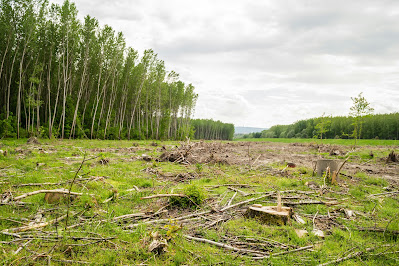Are Your Meals Destroying Forests?
Picture this: you’re sitting down to enjoy a delicious meal—maybe a juicy burger, a chocolate bar, or even a fresh avocado toast. What if I told you that hidden behind those flavors is a bigger story—one that involves vast rainforests, endangered wildlife, and the steady disappearance of some of the planet’s most crucial ecosystems?
Deforestation isn’t just about chopping down trees. It’s about the choices we make at the grocery store and how our favorite foods shape landscapes thousands of miles away. So, how exactly does what’s on your plate connect to the destruction of the Amazon, the forests of Southeast Asia, and beyond? Let’s dig in.
The Big Culprits: What Foods Are Driving Deforestation?
1. Beef: The Rainforest’s Biggest Enemy
If there’s one food that’s undeniably linked to deforestation, it’s beef. In countries like Brazil, massive areas of the Amazon rainforest are cleared to make room for cattle ranching. The demand for cheap beef fuels illegal logging, destroys biodiversity, and contributes to climate change.
And it doesn’t stop there—cattle need food, too. That brings us to another major problem: soy.
2. Soy: Not Just for Vegans
Most people hear “soy” and think of tofu or soy milk, but here’s the twist: over 75% of the world’s soy production doesn’t go into human food—it’s used to feed livestock. That’s right, the burgers and chicken nuggets on your plate likely started with soy grown on deforested land.
3. Palm Oil: In Everything and Everywhere
Palm oil is in everything—from cookies to shampoo to peanut butter. This cheap, versatile oil is responsible for the destruction of forests in Indonesia and Malaysia, where companies burn down rainforests to plant palm trees. This not only wipes out entire ecosystems but also threatens endangered species like orangutans and tigers.
4. Coffee & Chocolate: Your Morning Cup and Sweet Treat Come at a Cost
That daily latte or chocolate bar might be more destructive than you think. Coffee and cocoa farms, especially in West Africa and South America, are often planted after clearing large forested areas. With demand constantly rising, many farmers turn to illegal deforestation to expand their plantations.
Is There a Way to Eat Without Hurting the Planet?
Yes! You don’t have to give up all your favorite foods, but small changes can make a huge difference.
- Choose sustainable meat alternatives or buy beef from responsible, pasture-raised sources.
- Look for products with the “RSPO” label (Roundtable on Sustainable Palm Oil) to ensure they use eco-friendly palm oil.
- Buy coffee and chocolate labeled “shade-grown” or “Rainforest Alliance Certified.” These methods help preserve forests rather than destroy them.
- Support local and seasonal produce. The fewer miles your food travels, the lower its impact.
The reality is, our food system isn’t perfect, but making informed choices helps shift demand toward more sustainable practices. Every time you choose responsibly, you’re voting for a food system that keeps our forests standing.
So, next time you sit down for a meal, think about what went into making it—not just the flavors, but the forests, too.
Amazon Product Recommendation:
Try Tony’s Chocolonely Dark Chocolate—a brand committed to ethical, deforestation-free cocoa farming. A delicious way to enjoy chocolate without harming the planet!

0 Comments
Post a Comment